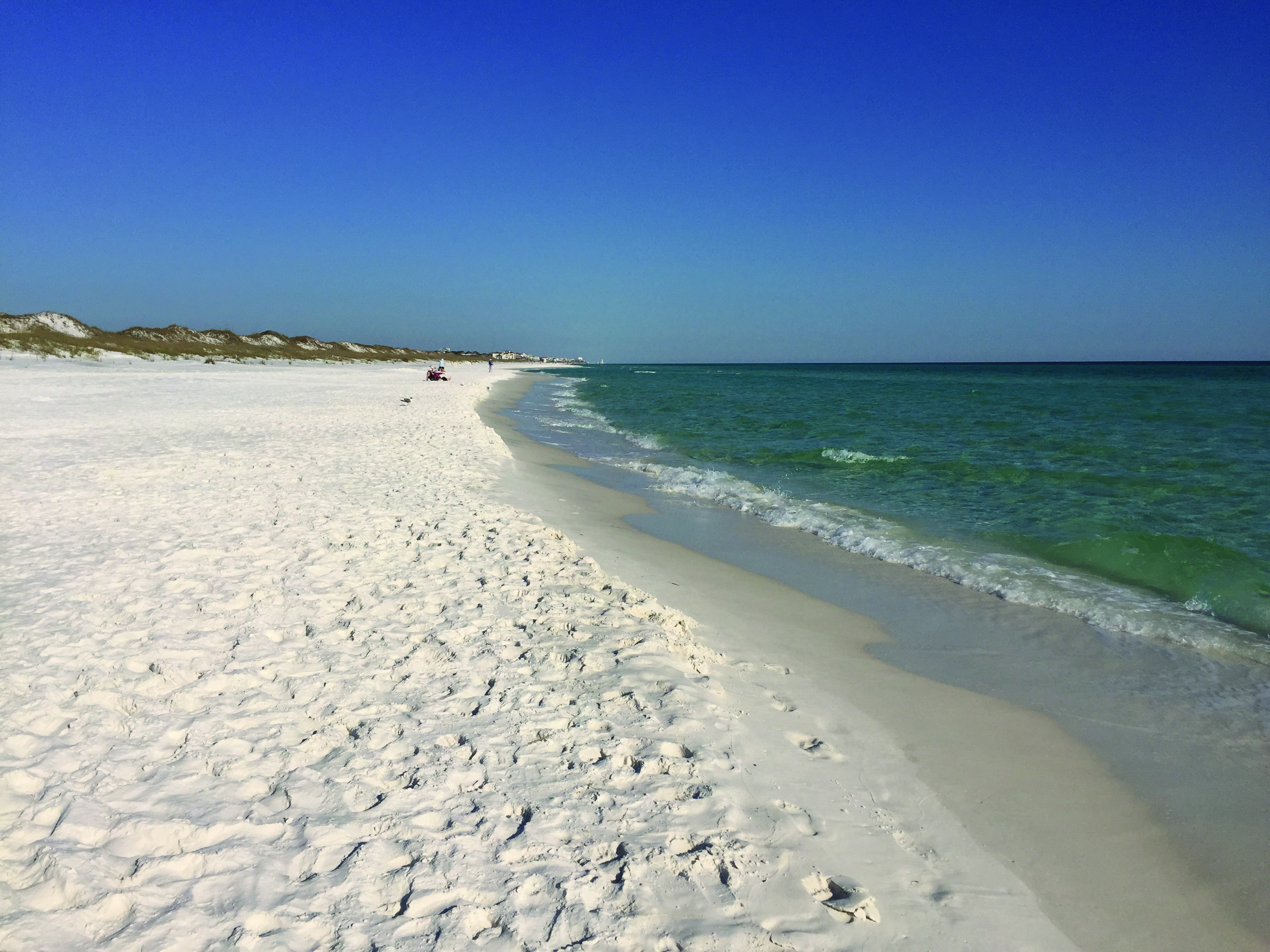
Beaches at Topsail

The park’s namesake, Topsail Hill, is a dune that rises 25 feet above sea level. Dunes are formed as wind piles up sand that is then trapped by the roots of sea oats and other specially-adapted plants. The beaches, dunes and marshes here have been shaped by wind and water for much of the past two million years.

Over time, the dunes here have come together to create a very rare ecosystem — coastal dune lakes. These freshwater lakes occur only in Florida, Oregon, New Zealand, Australia and Madagascar. The coastal dune lakes at Topsail Hill Preserve are especially remarkable because they are untouched by development.
The park’s beaches are among the best in the world. Clean white sand and clear blue water as far as the eye can see. The park has 3.2 miles of beach that is perfect for relaxing, sunbathing, swimming, or snorkeling. Visitors can fish off the beach or in coastal dune lakes. Saltwater catches include pompano, redfish, Spanish mackerel and king mackerel. Commonly caught freshwater fish are bass, panfish and catfish.
This beautiful coastal park doesn’t just attract people — wildlife-viewing opportunities are extraordinary. Easter bluebirds and brilliant red cardinals flit through the park’s maritime forest. Raptors like red shouldered hawks and osprey patrol the sky looking for prey. On the beach, snowy plovers and piping plovers dance along the waves.
This park is also home to a population of the rare Choctawhatchee beach mouse, an elusive species that is perfectly adapted to life on these tall dunes. In the summer, adult loggerhead turtles and green sea turtles build nests on the same beach where they were born, continuing a cycle that has lasted thousands of years. Whether walking on beaches or trails, wildlife-enthusiasts should be sure to bring their field guide to help identify some of the great variety of animals that live here.